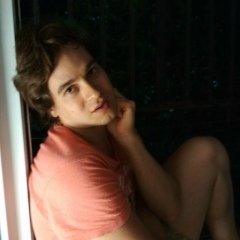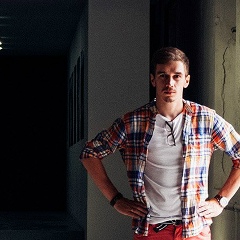Продолжаем Культурный флешмоб!
Суть в том, что каждому, кто поставит лайк этого поста, я назову имя художника, понравившуюся картину которого нужно будет запостить у себя, распространяя таким образом прекрасное по ленте.
Мне на этот раз достался Рублев)
Биографические сведения о Рублёве крайне скудны: скорее всего, родился он в Московском княжестве (по другим сведениям — в Великом Новгороде), вероятно, в конце 1370-х гг.[3], из-за прозвища «Рублёв» (от слова «рубель» — инструмент для накатки кож) предполагают, что он мог происходить из ремесленной семьи[4]. Принял монашеский постриг в Троице-Сергиевом монастыре при Никоне Радонежском с именем Андрей; мирское имя неизвестно (скорее всего, по тогдашней традиции, оно тоже начиналось на «А»). Сохранилась икона, подписанная «Андрей Иванов сын Рублёв»; она поздняя и подпись явно поддельная, но, возможно, является косвенным свидетельством того, что отца художника действительно звали Иваном.
Творчество Рублёва сложилось на почве художественных традиций Московского княжества; он был хорошо знаком также со славянским художественным опытом. Первое упоминание об Андрее в летописи появилось только в 1405 году, свидетельствующее о том, что Феофаном Греком, Прохором-старцем и чернецом Андреем Рублёвым был расписан Благовещенский собор в Московском кремле. Видимо, к 1405 году Андрей основательно преуспел в своём мастерстве иконописи, если монаху поручили такую ответственную работу и к тому же с Феофаном Греком. Второй раз в летописи Андрей упоминается в 1408 году, когда он делал росписи с Даниилом Чёрным в Успенском соборе во Владимире. Прошло всего 3 года, а у Андрея уже появились помощники и ученики, к тому времени у Андрея уже полностью сформировался свой индивидуальный, настоящий русский стиль. В 1420-х годах Андрей с Даниилом Чёрным руководил работами в Троицком соборе Троице-Сергиева монастыря. Эти росписи не сохранились. В 1411 или 1425—27 годах он создал свой шедевр — «Троицу».
Рублёв скончался во время морового поветрия 17 октября 1428 года в Москве, в Андрониковом монастыре, где весной 1428 года выполнил свою последнюю работу по росписи Спасского собора. Похоронен возле колокольни в Андрониковом монастыре (Спасский собор).
Канонизирован Русской православной церковью в лике преподобных.
Наиболее известные иконы Рублева:
1. Спас Рублева - произведение, оказавшее огромное влияние на современников художника, и на все последующие поколения русских людей. Он жив, открыт, величествен, и одновременно в нем ощущается мягкость соответственно славянскому типу, он имеет некрупные черты лица, обрамленного русой шелковистой бородкой. Цветовую гамму составляют золотистые, разных оттенков охры лика, темноватая легкая лазурь гиматия (на одежде). Выражение лица в сочетании с цветовой гаммой создает впечатление мудрого спокойствия. Живопись на поверхности доски сохранилась плохо, осталась только часть с изображением лица Спаса. Но все уцелевшее так великолепно, что это произведение, бесспорно, является одним из шедевров древнерусского искусства. Благородная простота образа «Спаса» и его монументальный характер - типические особенности стиля Рублева.
2. В "Троице" Андрей Рублев явил себя выдающимся мыслителем, "всех превосходящих в мудрости", человеком высочайшей нравственной культуры, недостижимой для нас чистоты души, осененной божественной гениальностью. Икона, которую он создал, несмотря на свою внешнюю простоту, окажется безграничной и многогранной по содержанию, как Млечный Путь над нашей головой в теплую июльскую ночь... Ее поймут и примут как заветно близкое и его современники, а затем и многие поколения людей. Трое ангелов парят над землей, их обнаженные ступни не опираются на землю, их тончайшие посохи - лишь символы странничества, напоминающие человеку, что он только временно здесь, на земле, и ничего не сможет унести с собой отсюда, кроме своей души и царящей в ней правды. Отблеск голубого цвета - это опрокинутое в человеческой природе небо. Жизненная мудрость не отягощает ангелов, а делает их как бы возвышающимися над миром. И этому же вторит и надмирное сияние красок. И оттого, может быть, так радостна грусть рублевских ангелов. На творение это легко смотреть. Не случайно и сам Рублев писал свою «Троицу», «неуклонно взирающе на всечестные иконы, наполнялся радости и светлости»...
Суть в том, что каждому, кто поставит лайк этого поста, я назову имя художника, понравившуюся картину которого нужно будет запостить у себя, распространяя таким образом прекрасное по ленте.
Мне на этот раз достался Рублев)
Биографические сведения о Рублёве крайне скудны: скорее всего, родился он в Московском княжестве (по другим сведениям — в Великом Новгороде), вероятно, в конце 1370-х гг.[3], из-за прозвища «Рублёв» (от слова «рубель» — инструмент для накатки кож) предполагают, что он мог происходить из ремесленной семьи[4]. Принял монашеский постриг в Троице-Сергиевом монастыре при Никоне Радонежском с именем Андрей; мирское имя неизвестно (скорее всего, по тогдашней традиции, оно тоже начиналось на «А»). Сохранилась икона, подписанная «Андрей Иванов сын Рублёв»; она поздняя и подпись явно поддельная, но, возможно, является косвенным свидетельством того, что отца художника действительно звали Иваном.
Творчество Рублёва сложилось на почве художественных традиций Московского княжества; он был хорошо знаком также со славянским художественным опытом. Первое упоминание об Андрее в летописи появилось только в 1405 году, свидетельствующее о том, что Феофаном Греком, Прохором-старцем и чернецом Андреем Рублёвым был расписан Благовещенский собор в Московском кремле. Видимо, к 1405 году Андрей основательно преуспел в своём мастерстве иконописи, если монаху поручили такую ответственную работу и к тому же с Феофаном Греком. Второй раз в летописи Андрей упоминается в 1408 году, когда он делал росписи с Даниилом Чёрным в Успенском соборе во Владимире. Прошло всего 3 года, а у Андрея уже появились помощники и ученики, к тому времени у Андрея уже полностью сформировался свой индивидуальный, настоящий русский стиль. В 1420-х годах Андрей с Даниилом Чёрным руководил работами в Троицком соборе Троице-Сергиева монастыря. Эти росписи не сохранились. В 1411 или 1425—27 годах он создал свой шедевр — «Троицу».
Рублёв скончался во время морового поветрия 17 октября 1428 года в Москве, в Андрониковом монастыре, где весной 1428 года выполнил свою последнюю работу по росписи Спасского собора. Похоронен возле колокольни в Андрониковом монастыре (Спасский собор).
Канонизирован Русской православной церковью в лике преподобных.
Наиболее известные иконы Рублева:
1. Спас Рублева - произведение, оказавшее огромное влияние на современников художника, и на все последующие поколения русских людей. Он жив, открыт, величествен, и одновременно в нем ощущается мягкость соответственно славянскому типу, он имеет некрупные черты лица, обрамленного русой шелковистой бородкой. Цветовую гамму составляют золотистые, разных оттенков охры лика, темноватая легкая лазурь гиматия (на одежде). Выражение лица в сочетании с цветовой гаммой создает впечатление мудрого спокойствия. Живопись на поверхности доски сохранилась плохо, осталась только часть с изображением лица Спаса. Но все уцелевшее так великолепно, что это произведение, бесспорно, является одним из шедевров древнерусского искусства. Благородная простота образа «Спаса» и его монументальный характер - типические особенности стиля Рублева.
2. В "Троице" Андрей Рублев явил себя выдающимся мыслителем, "всех превосходящих в мудрости", человеком высочайшей нравственной культуры, недостижимой для нас чистоты души, осененной божественной гениальностью. Икона, которую он создал, несмотря на свою внешнюю простоту, окажется безграничной и многогранной по содержанию, как Млечный Путь над нашей головой в теплую июльскую ночь... Ее поймут и примут как заветно близкое и его современники, а затем и многие поколения людей. Трое ангелов парят над землей, их обнаженные ступни не опираются на землю, их тончайшие посохи - лишь символы странничества, напоминающие человеку, что он только временно здесь, на земле, и ничего не сможет унести с собой отсюда, кроме своей души и царящей в ней правды. Отблеск голубого цвета - это опрокинутое в человеческой природе небо. Жизненная мудрость не отягощает ангелов, а делает их как бы возвышающимися над миром. И этому же вторит и надмирное сияние красок. И оттого, может быть, так радостна грусть рублевских ангелов. На творение это легко смотреть. Не случайно и сам Рублев писал свою «Троицу», «неуклонно взирающе на всечестные иконы, наполнялся радости и светлости»...
We continue Cultural flashmob!
The bottom line is that everyone who likes this post, I will give the name of the artist whose favorite picture you will need to post in, thus spreading the beautiful on the tape.
I got Rublev this time)
Biographical information about Rublev is extremely scarce: he was most likely born in the Moscow principality (according to other information in Veliky Novgorod), probably in the late 1370s [3], because of the nickname “Rublev” (from the word "- tool for rolling leather) suggest that it could come from a craft family [4]. He took monastic vows at the Trinity-Sergius Monastery under Nikon Radonezh with the name Andrei; the worldly name is unknown (most likely, according to the tradition of the time, it also began on “A”). Preserved icon, signed "Andrei Ivanov son Rublev"; she is late and the signature is obviously fake, but perhaps it is indirect evidence that the artist’s father was really called Ivan.
Creativity Rublev was formed on the basis of the artistic traditions of the Moscow principality; He was also well acquainted with Slavic artistic experience. The first mention of Andrei in the annals appeared only in 1405, indicating that Feofan the Greek, Prokhor the Elder and Chernets Andrei Rublev painted the Annunciation Cathedral in the Moscow Kremlin. Apparently, by 1405, Andrew thoroughly succeeded in his mastery of icon painting, if the monk was assigned such responsible work and also with Theophanes the Greek. The second time in the annals of Andrew is mentioned in 1408, when he did murals with Daniel Cherny in the Assumption Cathedral in Vladimir. Only 3 years have passed, and Andrei already had assistants and students, by that time Andrei had already completely formed his own individual, real Russian style. In the 1420s, Andrew and Daniel Cherny led the work at the Trinity Cathedral of the Trinity-Sergius Monastery. These paintings are not preserved. In 1411 or 1425-27 he created his masterpiece, the “Trinity”.
Rublev died during the plague on October 17, 1428 in Moscow, in the Andronikov monastery, where in the spring of 1428 he completed his last work on the painting of the Savior Cathedral. He was buried near the bell tower in the Andronikov monastery (Spassky Cathedral).
Canonized by the Russian Orthodox Church in the face of the saints.
The most famous icons of Rublev:
1. Spas Rubleva - a work that had a great influence on the contemporaries of the artist, and on all subsequent generations of Russian people. He is alive, open, majestic, and at the same time it feels soft in accordance with the Slavic type, it has medium-sized features framed by a light brown silky beard. The color gamut is made up of golden, different shades of ocher, dark blue light azure Himatia (on clothes). The facial expression in combination with the color scheme creates the impression of wise calm. Painting on the surface of the board was preserved poorly, only a part with the image of the Savior’s face remained. But everything that has survived is so magnificent that this work is undoubtedly one of the masterpieces of ancient Russian art. The noble simplicity of the “Savior” image and its monumental character are typical features of the Rublev style.
2. In the "Trinity" Andrei Rublev showed himself an outstanding thinker, "all superior in wisdom," a man of the highest moral culture, an unattainable for us purity of the soul, an autumnal divine genius. The icon, which he created, despite his outward simplicity, will turn out to be limitless and multifaceted in content, like the Milky Way over our head on a warm July night ... Her contemporaries and then many generations of people will understand and accept her as cherished close. Three angels hover above the earth, their bare feet do not rest on the earth, their subtle staffs are only symbols of pilgrim, reminding man that he is only temporarily here on earth and cannot carry anything away from here except his soul and the one that reigns in him the truth. The reflection of the blue color is the sky overturned in human nature. The wisdom of life does not burden the angels, but makes them seem to rise above the world. And the same is echoed by the supra world radiance of colors. And that is why, perhaps, the sadness of the Rublev angels is so joyful. It is easy to look at creation. It was not by chance that Rublev himself wrote his “Trinity”, “steadily gazing at honest icons, filled with joy and ladyship” ...
The bottom line is that everyone who likes this post, I will give the name of the artist whose favorite picture you will need to post in, thus spreading the beautiful on the tape.
I got Rublev this time)
Biographical information about Rublev is extremely scarce: he was most likely born in the Moscow principality (according to other information in Veliky Novgorod), probably in the late 1370s [3], because of the nickname “Rublev” (from the word "- tool for rolling leather) suggest that it could come from a craft family [4]. He took monastic vows at the Trinity-Sergius Monastery under Nikon Radonezh with the name Andrei; the worldly name is unknown (most likely, according to the tradition of the time, it also began on “A”). Preserved icon, signed "Andrei Ivanov son Rublev"; she is late and the signature is obviously fake, but perhaps it is indirect evidence that the artist’s father was really called Ivan.
Creativity Rublev was formed on the basis of the artistic traditions of the Moscow principality; He was also well acquainted with Slavic artistic experience. The first mention of Andrei in the annals appeared only in 1405, indicating that Feofan the Greek, Prokhor the Elder and Chernets Andrei Rublev painted the Annunciation Cathedral in the Moscow Kremlin. Apparently, by 1405, Andrew thoroughly succeeded in his mastery of icon painting, if the monk was assigned such responsible work and also with Theophanes the Greek. The second time in the annals of Andrew is mentioned in 1408, when he did murals with Daniel Cherny in the Assumption Cathedral in Vladimir. Only 3 years have passed, and Andrei already had assistants and students, by that time Andrei had already completely formed his own individual, real Russian style. In the 1420s, Andrew and Daniel Cherny led the work at the Trinity Cathedral of the Trinity-Sergius Monastery. These paintings are not preserved. In 1411 or 1425-27 he created his masterpiece, the “Trinity”.
Rublev died during the plague on October 17, 1428 in Moscow, in the Andronikov monastery, where in the spring of 1428 he completed his last work on the painting of the Savior Cathedral. He was buried near the bell tower in the Andronikov monastery (Spassky Cathedral).
Canonized by the Russian Orthodox Church in the face of the saints.
The most famous icons of Rublev:
1. Spas Rubleva - a work that had a great influence on the contemporaries of the artist, and on all subsequent generations of Russian people. He is alive, open, majestic, and at the same time it feels soft in accordance with the Slavic type, it has medium-sized features framed by a light brown silky beard. The color gamut is made up of golden, different shades of ocher, dark blue light azure Himatia (on clothes). The facial expression in combination with the color scheme creates the impression of wise calm. Painting on the surface of the board was preserved poorly, only a part with the image of the Savior’s face remained. But everything that has survived is so magnificent that this work is undoubtedly one of the masterpieces of ancient Russian art. The noble simplicity of the “Savior” image and its monumental character are typical features of the Rublev style.
2. In the "Trinity" Andrei Rublev showed himself an outstanding thinker, "all superior in wisdom," a man of the highest moral culture, an unattainable for us purity of the soul, an autumnal divine genius. The icon, which he created, despite his outward simplicity, will turn out to be limitless and multifaceted in content, like the Milky Way over our head on a warm July night ... Her contemporaries and then many generations of people will understand and accept her as cherished close. Three angels hover above the earth, their bare feet do not rest on the earth, their subtle staffs are only symbols of pilgrim, reminding man that he is only temporarily here on earth and cannot carry anything away from here except his soul and the one that reigns in him the truth. The reflection of the blue color is the sky overturned in human nature. The wisdom of life does not burden the angels, but makes them seem to rise above the world. And the same is echoed by the supra world radiance of colors. And that is why, perhaps, the sadness of the Rublev angels is so joyful. It is easy to look at creation. It was not by chance that Rublev himself wrote his “Trinity”, “steadily gazing at honest icons, filled with joy and ladyship” ...
У записи 2 лайков,
0 репостов.
0 репостов.
Эту запись оставил(а) на своей стене Татьяна Гордейчук






















